Churches
Oratorio della Compagnia di Santa Croce
ASCIANO LISTEN THE AUDIO GUIDE
LISTEN THE AUDIO GUIDE.jpeg)
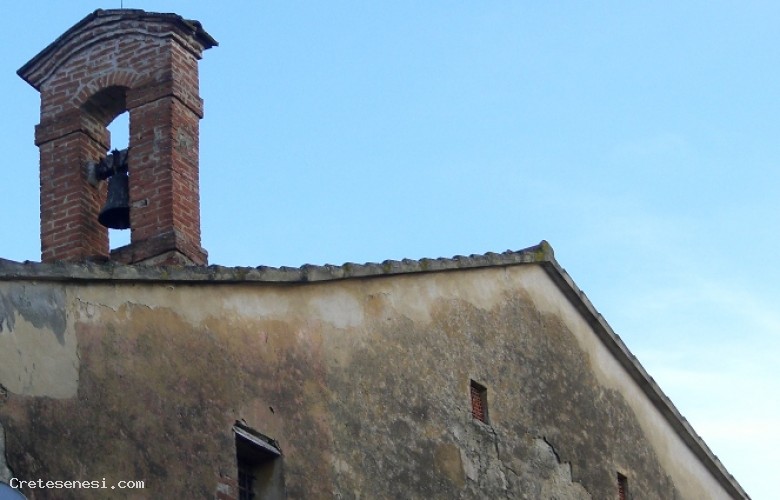
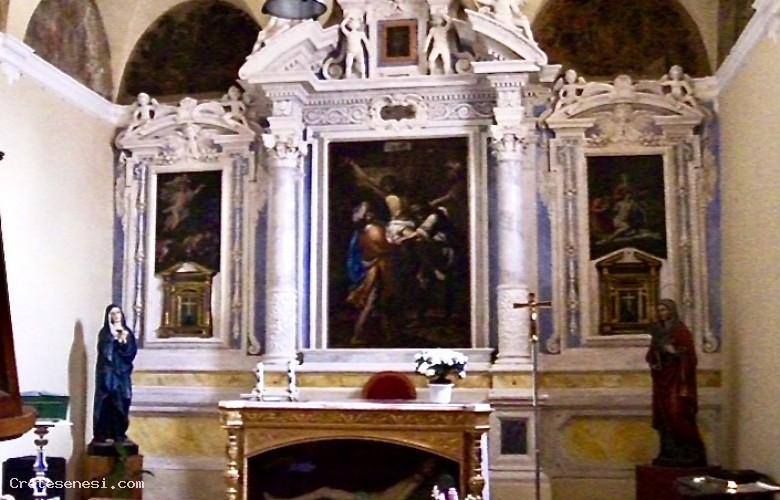
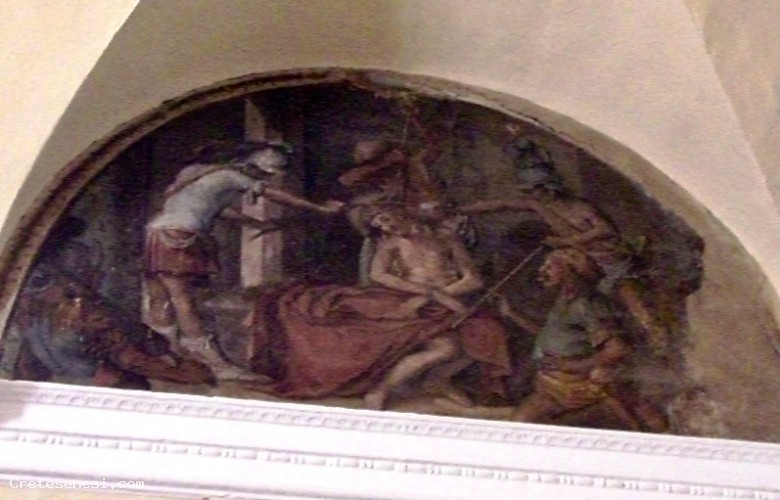
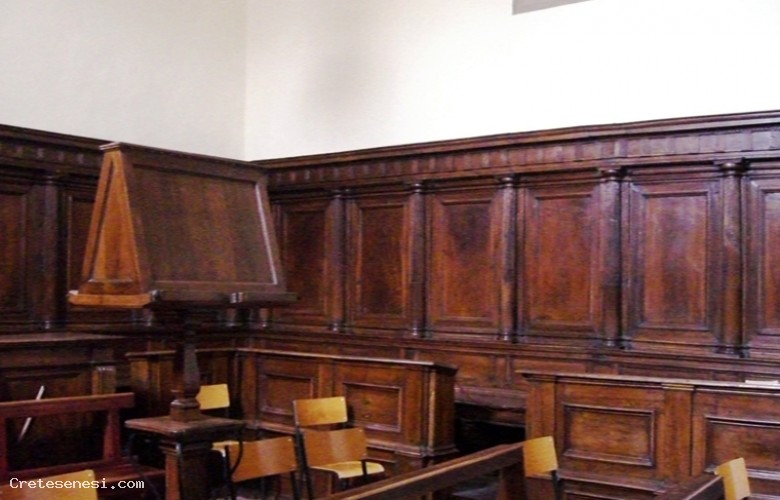
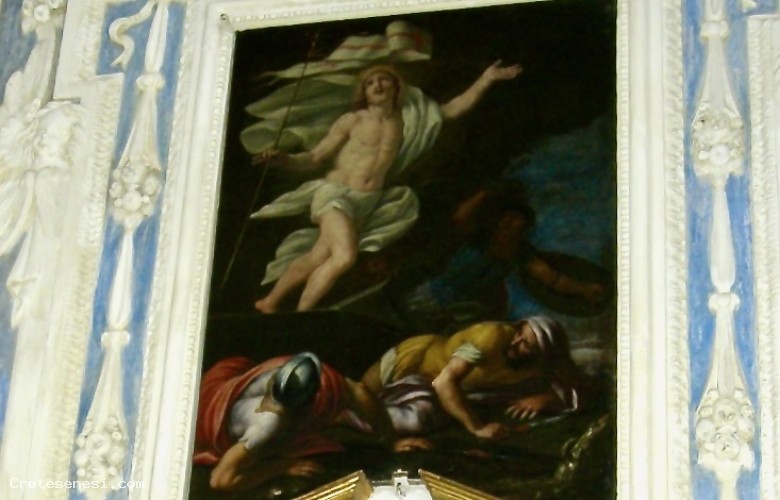
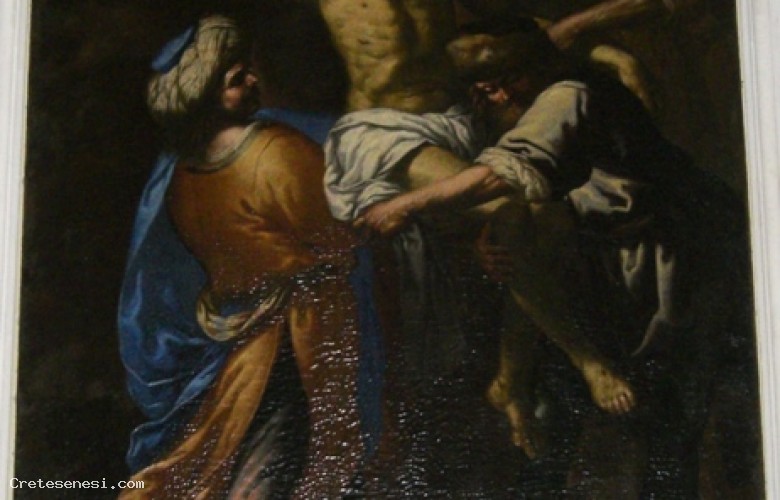
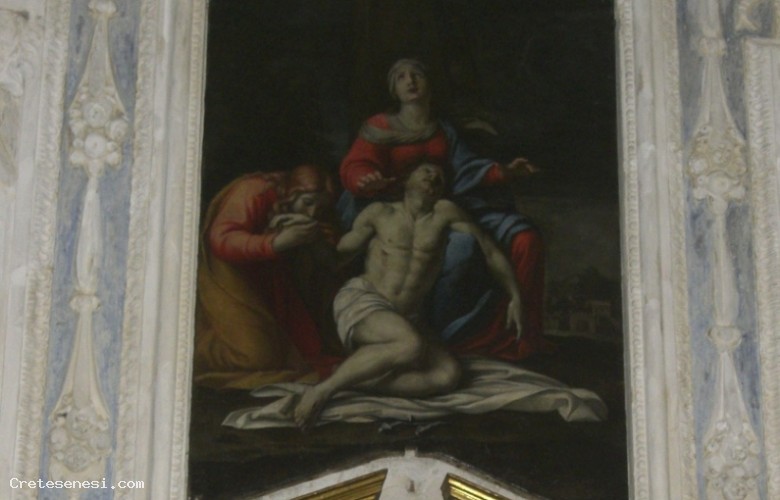
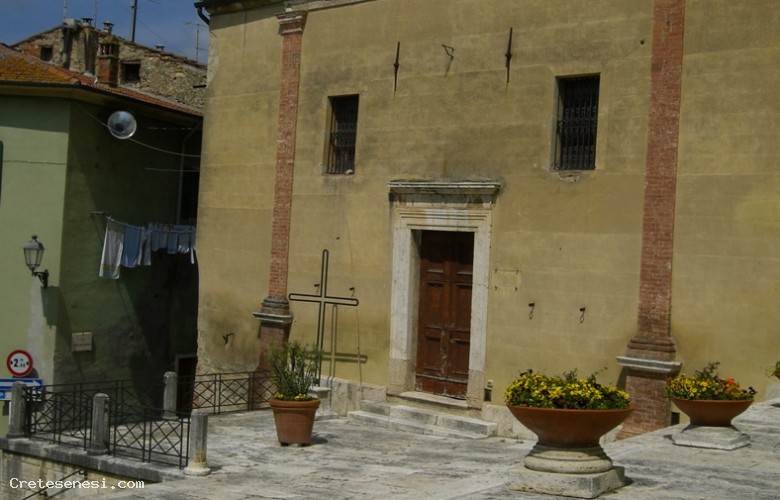
Time table
For sight, ask the parish priest or play in the parish.The oratory, once the meeting place of a laymen's organization no longer in existence, has homogeneous 17th-century furnishings and decorations all focused on the Passion of Christ. The theme is repeated both on the lunettes painted with frescoes by Francesco Nasini in 1660 as well as on the high altar designed by Bernardino Mei and Deifebo Burbarini in the same period. The beautiful wooden choir at the end of the oratory dates from the same time.
Externally the building has a rectangular facade, with two brick slabs that support a molded frame. At the center, a rectangular travertine portal, while at the sides, higher, two rectangular windows are opened. The exterior finish is plastered, which simulates the horizontal course of the stone. Access to the church is lateral and leads directly to a rectangular-class hall, covered with moored sailboats, between which frescoed lunettes are located.
Inside, under the altar, is preserved the polychrome statue of the "dead Christ", by the artist Luigi Magi and used for the procession of Good Friday. Even the fifteenth-century wooden crucifix, now housed in the present cathedral, comes from this oratory where it remained until 1952.
After 1844, the year of suppression of the "Confraternity of the SS Crucifix", the premises were returned to the parish of Sant'Agata and, after the rest of 1952, have long been the seat of the local Museum of Sacred Art, today transferred to Palazzo Corboli.
The oratory, once the meeting place of a laymen's organization no longer in existence, has homogeneous 17th-century furnishings and decorations all focused on the Passion of Christ. The theme is repeated both on the lunettes painted with frescoes by Francesco Nasini in 1660 as well as on the high altar designed by Bernardino Mei and Deifebo Burbarini in the same period. The beautiful wooden choir at the end of the oratory dates from the same time.
Externally the building has a rectangular facade, with two brick slabs that support a molded frame. At the center, a rectangular travertine portal, while at the sides, higher, two rectangular windows are opened. The exterior finish is plastered, which simulates the horizontal course of the stone. Access to the church is lateral and leads directly to a rectangular-class hall, covered with moored sailboats, between which frescoed lunettes are located.
Inside, under the altar, is preserved the polychrome statue of the "dead Christ", by the artist Luigi Magi and used for the procession of Good Friday. Even the fifteenth-century wooden crucifix, now housed in the present cathedral, comes from this oratory where it remained until 1952.
After 1844, the year of suppression of the "Confraternity of the SS Crucifix", the premises were returned to the parish of Sant'Agata and, after the rest of 1952, have long been the seat of the local Museum of Sacred Art, today transferred to Palazzo Corboli.